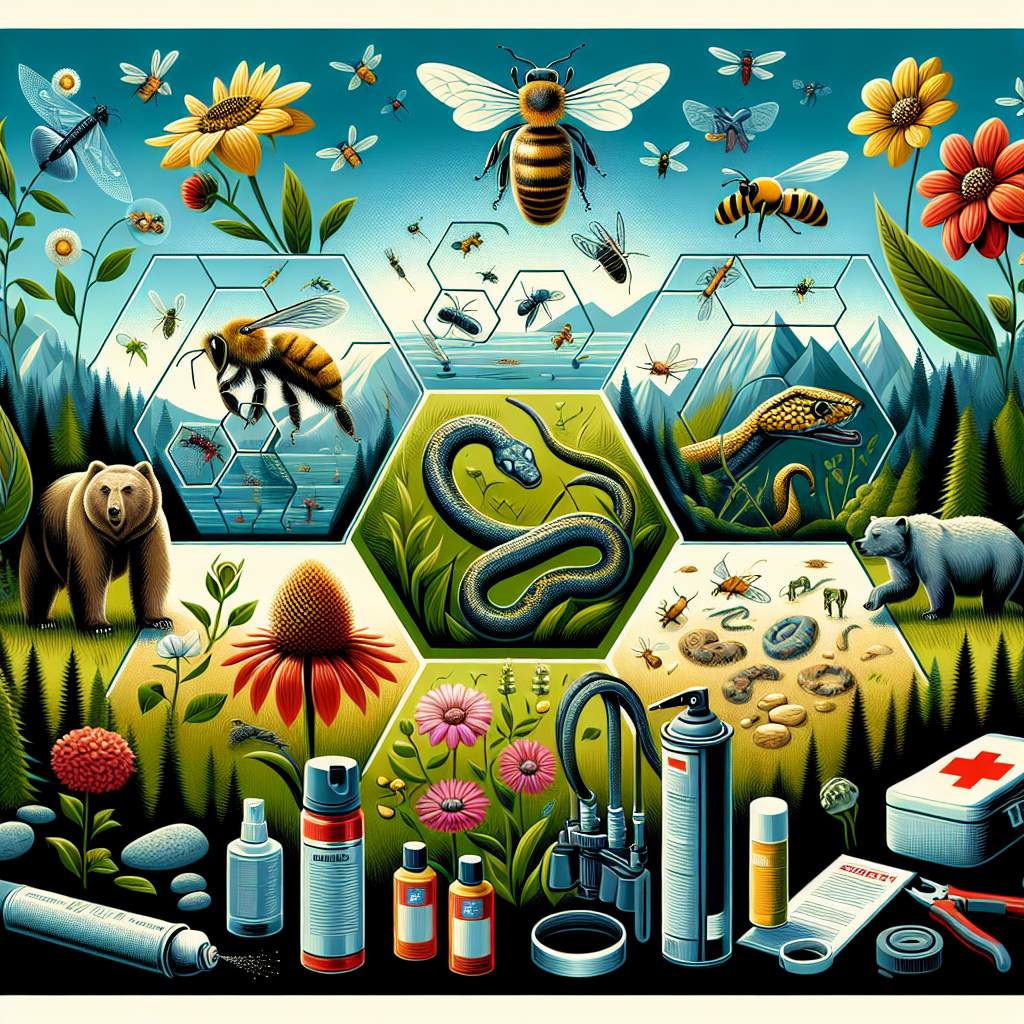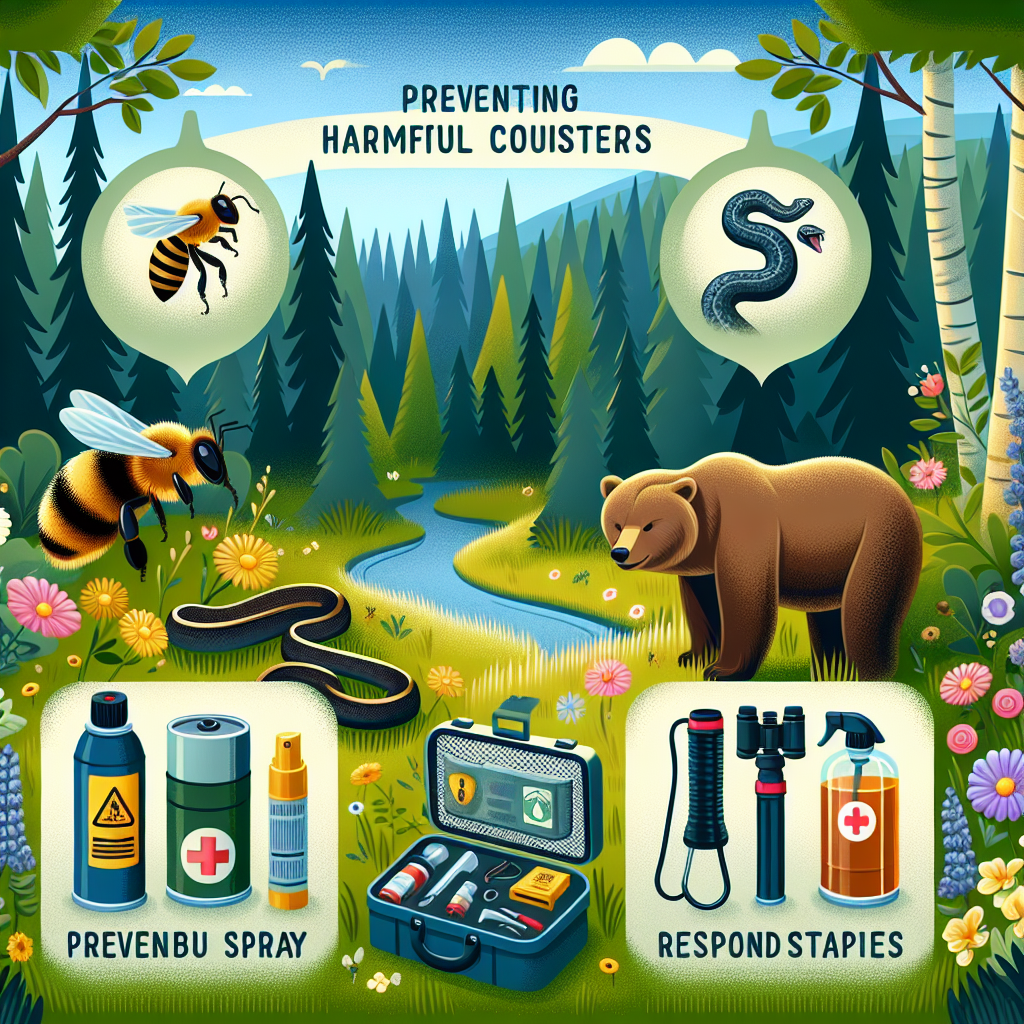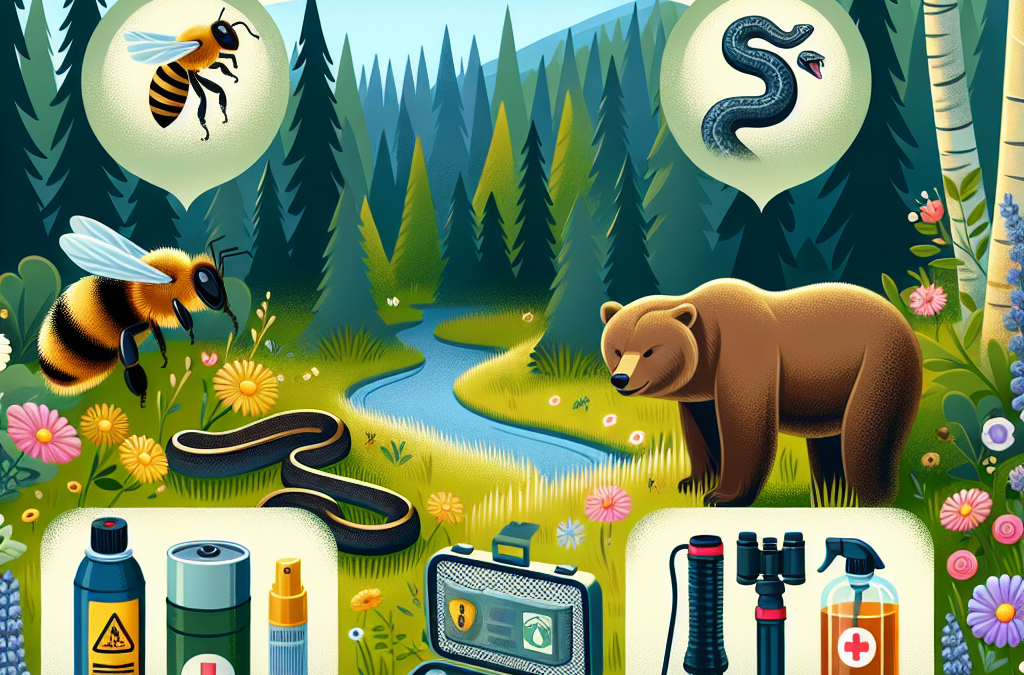As you venture into the great outdoors, it’s only natural to encounter the original inhabitants – insects and wildlife. They contribute significantly to the ecosystems around us, yet their interaction with humans can pose some safety concerns. “insect and wildlife safety: Prevention And Response,” seamlessly highlights the precautionary measures and action plans you can adopt to ensure your safety and well-being during such encounters. With a thoughtful balance of anticipatory methods and practical response tactics, this guide empowers you to safeguard yourself effectively during your interactions with insects and wildlife, promoting a healthy coexistence with our natural neighbors.
Understanding the Importance of Insect and Wildlife Safety
interacting with nature can be a fulfilling and exciting experience. Nonetheless, it comes with its share of hazards, some of which include encounters with insects and wildlife. It’s critical to learn about these potential threats, not only for your safety but for the well-being of these creatures and ecosystems as well.
Dangers posed by insects and wildlife
Insects and wildlife pose a myriad of threats to humans. From being bitten or stung, which can lead to severe allergic reactions, diseases, and physical injuries, to the potential property damage that wildlife can inflict. Moreover, aggressive wildlife can pose a risk of injury, or in extreme cases, even death.
Importance of safety measures for human and ecosystem health
While these dangers may be scary, it’s important to remember that insects and wildlife are crucial components of ecosystems. They play vital roles such as pollination, decay, and population control of other species. Hence, instead of exterminating them, taking safety measures can preserve these important organisms while protecting ourselves and the environment.
Identifying Potential Threats
Understanding the potential threats in your area is the first step in being able to react appropriately.
Common wildlife threats by region
Depending on your region, different types of wildlife may pose a threat. It could be bears in forested areas, coyotes in the desert regions or alligators in coastal wetlands among others. Understanding these threats is key to unknowingly not putting yourself or the wildlife at risk.
Common insect threats in residential and wild areas
Even in residential areas, insects like wasps, bees, and ants can pose significant threats, especially for individuals who are allergic. Ticks and mosquitos are commonplace in wild areas and can transmit diseases like Lyme disease or West Nile virus.
Recognizing signs of dangerous wildlife or insects
Getting acquainted with the signs of dangerous wildlife or insects will dramatically boost your safety in their environment. These signs could include tracks, scat, or broken vegetation for wildlife, and hives or nests for insects.

Preparation and Prevention
Preventing encounters with potentially dangerous wildlife and insects is often simpler and safer than dealing with them.
Wildlife and insect repellant options
Using wildlife and insect repellants can be an effective way to avoid unwanted encounters. There’s a wide range of insect repellants available, while other methods like noise and light can also deter wildlife.
Securing homes and yards against wildlife
Ensuring your property is secure can significantly reduce the likelihood of encounters. This could involve sealing entry points to your home, keeping food stored securely, and using fences to keep wildlife out of your yard.
Safe practices in wildlife-populated areas
When you’re in areas populated by wildlife, keeping a safe distance and avoiding feeding or antagonizing the animals can go a long way in ensuring your safety.
Clothing and gear for preventing insect related injuries
Protective clothing and gear can also minimize the chance of insect-related injuries. Covering your skin, especially in insect-infested areas, and the use of bed nets in mosquito-prone areas can prevent bites.
When Encountering Dangerous Wildlife
Despite preventive measures, encounters may happen. Knowing what to do in these situations can make a big difference.
Safety measures when dealing with large mammal encounters
If you encounter a large mammal, it’s typically best to remain calm, avoid direct eye contact, back away slowly and to make yourself look larger.
What to do if you come across aggressive or protective wildlife
For aggressive or protective wildlife, never turn your back or run – that can trigger a chase response. Instead, aim to appear less threatening and slowly distance yourself.
Proper response to a wildlife attack
When an attack is imminent, every animal responds differently to deference or aggression. It can be helpful to have knowledge of how to react to the species you’re likely to encounter.

When Encountering Dangerous Insects
Insect encounters are more common but typically less dangerous. Here are some tips on how to react.
First steps when bitten or stung
After a bite or sting, it’s crucial to remove yourself from the vicinity of the insect to avoid further injury. Once safe, try to identify the insect as it can assist in further treatment.
Methods of treating common insect bites and stings
Treatment can range from washing the area and applying a cold compress to over-the-counter treatments or in serious cases, emergency medical attention may be needed.
Avoiding attracting insects
Avoid using fragrant lotions or perfumes, as these can attract insects. Also, covering food and drink can keep insects at bay during outdoor activities.
Teaching Children About Insect and Wildlife Safety
Educating children about safety and respect for nature is a crucial step in prevention.
Explaining the dangers of insects and wildlife to children
Teach children about the potential dangers of wildlife and insects. Use age-appropriate language and reinforce that these creatures are to be respected, not feared.
Practical steps for children to take in the event of encounters
Educate kids on practical steps in case of an encounter or bite/sting. This could involve teaching them not to disturb wildlife, to inform an adult immediately if bitten, and to wear protective clothing in nature.
Educating children about the importance of respecting nature
Empower children with knowledge about the importance of insects and wildlife to build respect and lessen needless fear or mistreatment.
First Aid and Medical Responses
basic first aid knowledge can mean the difference between minor injury and severe consequences.
Basic first aid for wildlife-caused injuries
Understanding how to tend to scratches, punctures or bites is vital. This may include cleaning, disinfecting, and bandaging wounds, to recognizing the signs of infection.
Essential first aid for insect bites and stings
Knowing how to treat insect bites and stings is essential – whether removing a stinger, application of an antihistamine, or when to use an EpiPen.
When to seek professional medical help
Being able to identify when professional medical help is required is key. This could be due to severe allergic reactions, signs of infection, or if a dangerous animal inflicted the injury.
Insect and Wildlife Conservation Efforts
Safety and conservation are not mutually exclusive. The balance is key in sustaining biodiversity.
Balancing safety with conservation efforts
While we must protect ourselves, it’s important to consider how our safety measures can impact wildlife populations. Strive for solutions that deter, rather than harm.
Endangered species and respectful cohabitation
For endangered species especially, respectful cohabitation is critical. Knowledge of their behavior and breeding seasons can facilitate peaceful coexistence.
Educating about the importance of insects and wildlife in the ecosystem
Educating ourselves and others about the roles these creatures play can foster respect, appreciation, and better decision-making in our interactions with them.
Insect and Wildlife Safety While Camping and Hiking
Outdoor activities like camping and hiking require extra precautions when it comes to wildlife and insects.
Prevention measures for campers and hikers
These may include using bear-proof food containers, wearing insect repellent, and avoiding areas of known wildlife activity.
What to do in case of wildlife encounter during outdoor activities
If an encounter occurs, stay calm, alert others in your group, and follow the appropriate safety measures for the animal involved.
Importance of preserving nature while camping and hiking
Enjoy the great outdoors while also preserving it. Stick to the ‘Leave No Trace’ principles to minimize your effect on the natural environment and prevent attracting wildlife.
Insect and Wildlife Safety in Urban and Suburban Areas
Even in urban and suburban settings, it’s important to be aware of potential insect and wildlife encounters.
Potential wildlife and insect threats in urban environments
Urban dwellers may encounter pests like rats, raccoons or pigeons, while insects such as bees, wasps, or mosquitoes can still be a nuisance.
Prevention and response measures for city dwellers
Preventive measures can involve sealing your home, maintaining your property, and ensuring trash is properly stored.
Interacting with urban wildlife safely and responsibly
Should interactions with wildlife occur, it’s critical to remember they are wild animals and not pets. Observing from a distance ensures you keep yourself and the wildlife safe. It’s all about cohabitating with these creatures responsibly while respecting their roles in the environment.

